In this blog post, we will explore the art of emphasis in fashion design and show you how the techniques required to achieve that perfect balance in garments that turns heads and steals the spotlight.
Table of Content
- Highlighting Body Features and Concealing Flaws
- The Perils of Poorly Planned 'Emphasis' in Fashion Design
- Different Techniques to Create Emphasis in an Outfit
- Conclusion
- All Topics on Principles of Design in Fashion
- All Topics on Elements of Design in Fashion
- Explore Free Courses
- Join Fashion Designing Course
Highlighting Body Features and Concealing Flaws
A well-crafted garment can do wonders by showcasing your body's best features while subtly diverting attention from any perceived imperfections. The key to achieving this balance lies in the art of 'emphasis.' This technique involves skillfully utilizing various design elements like lines, details, colors, shapes, trims, and accessories. When combined strategically, these elements bolster the focal point, elevating its visual impact. Placing decorative emphasis at a structural point further enhances the overall allure.
For instance, this effect is achieved in the blue jacket shown in the picture by employing gold buttons, commanding attention and admiration.
Alternatively, vibrant leggings can draw attention to the wearer's legs, while a vivid collar can accentuate the neckline, creating a captivating and eye-catching look.
By thoughtfully planning the 'emphasis' in a design, it becomes a powerful tool, directing our gaze swiftly to the center of interest, infusing fashion with captivating charm. Stay tuned as we explore more inspiring examples and unravel the secrets behind creating stunning fashion products that exude confidence and charm.
The Perils of Poorly Planned 'Emphasis' in Fashion Design
When a design incorporates fewer details, it has the remarkable ability to create a clear focal point, drawing attention to a central area of interest.
However, a poorly planned 'emphasis' can lead to visual confusion, leaving us uncertain about where to focus on the garment. This confusion arises when an excessive number of areas compete for attention, causing the viewer's gaze to scatter unpredictably and unevenly.
The consequence of such an undirected design is evident – the viewer becomes disoriented, struggling to determine a definitive focus. As a result, the design fails to hold their attention and loses its intended impact. To truly captivate and engage, skilled fashion designers carefully orchestrate emphasis, guiding our eyes to the heart of their creation with purpose and finesse. The key lies in achieving a harmonious balance between elements, where the central point stands out distinctly, leaving a lasting impression on the beholder.
Different Techniques to Create Emphasis in an Outfit
Emphasis in fashion design can be achieved through the use of all the elements of design like line, color, texture, pattern, shape, space, form, placement, or any combination of these elements.
Here are some techniques emphasis can be applied successfully in designs.
Emphasis in Fashion Design Using Contrast
Contrast refers to the use of opposing elements to create visual interest and impact in a garment. Following are the ways by which contrast can be used to successfully achieve emphasis in dress.
- By using contrasting lines, colors(hue, value, tints, tone, etc), textures, patterns, or shapes, designers can draw attention to a specific area or feature of a garment.
- Emphasis in fashion design can be achieved by contrasting orientation in space as well i.e. horizontal space, vertical space, or diagonal space.
- Emphasis in fashion design can be achieved by contrasting styles in the garments. For example, using a geometric shape against a naturalistic image.
Example of Contrasts Creating Emphasis in Garments
A designer may use a combination of black and yellow fabrics to create a high-contrast look.
Some examples of garments with contrasting colors in dresses.
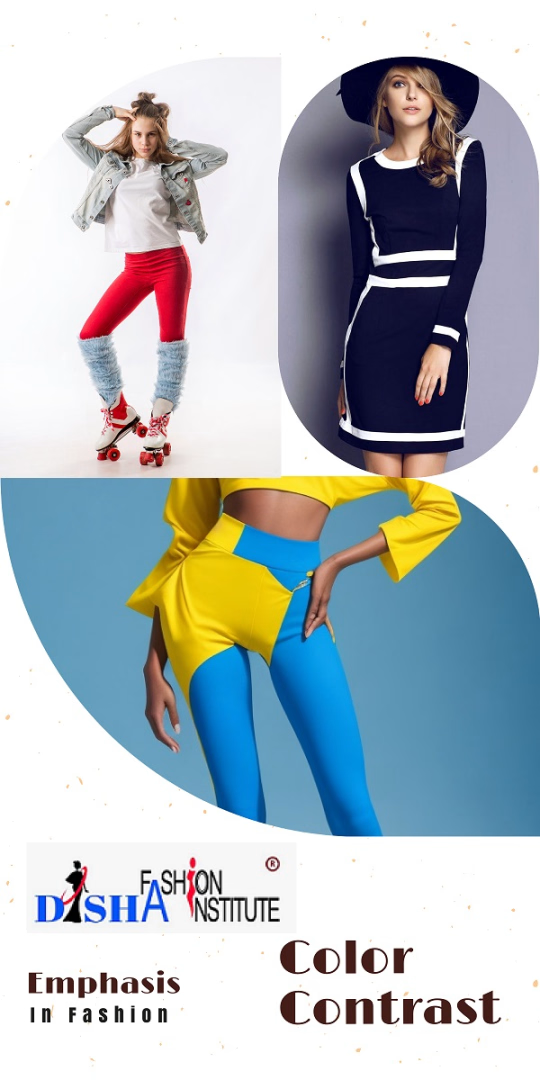
Manipulating proportions can create a contrast to emphasize certain parts of the body or the garment. For instance, a fitted bodice with a voluminous skirt can create a contrast drawing attention to the waist and creating a focal point.
Using contrasting prints or patterns can create visual impact and emphasis. For example, placing a bold pattern on the hemline or sleeves of a dress can make those areas stand out.
Mixing different style elements, such as combining casual and formal elements, can create emphasis and add interest to the overall design.
Incorporating contrasting details, like delicate lace on a structured jacket or edgy studs on a feminine dress, can create emphasis and intrigue.
Remember, while using contrast for emphasis is an effective technique, it's crucial to maintain harmony and balance within the overall design. Too much contrast can make the garment visually devastating. Skillful use of contrast requires an understanding of colour theory, and an eye for detail to create a cohesive and impactful look.
Emphasis in Fashion Design by Detailing
Detailing is another way to enhance the overall look of a garment.
Example of Emphasis in Garments by Detailing
By adding intricate details, such as beading, embroidery, lace, trims, zippers, ruffles, and frills designers can draw attention to a specific area of a garment.
Details can be used to create a sense of texture, depth, and complexity in a garment and they can also help to communicate the designer’s aesthetic vision. For example, a designer may use intricate embroidery to create a vintage-inspired look or use huge patchwork details to create a hippie look.
Functional details can also be added to a garment, such as pockets, closures etc to improve the functionality of a garment.
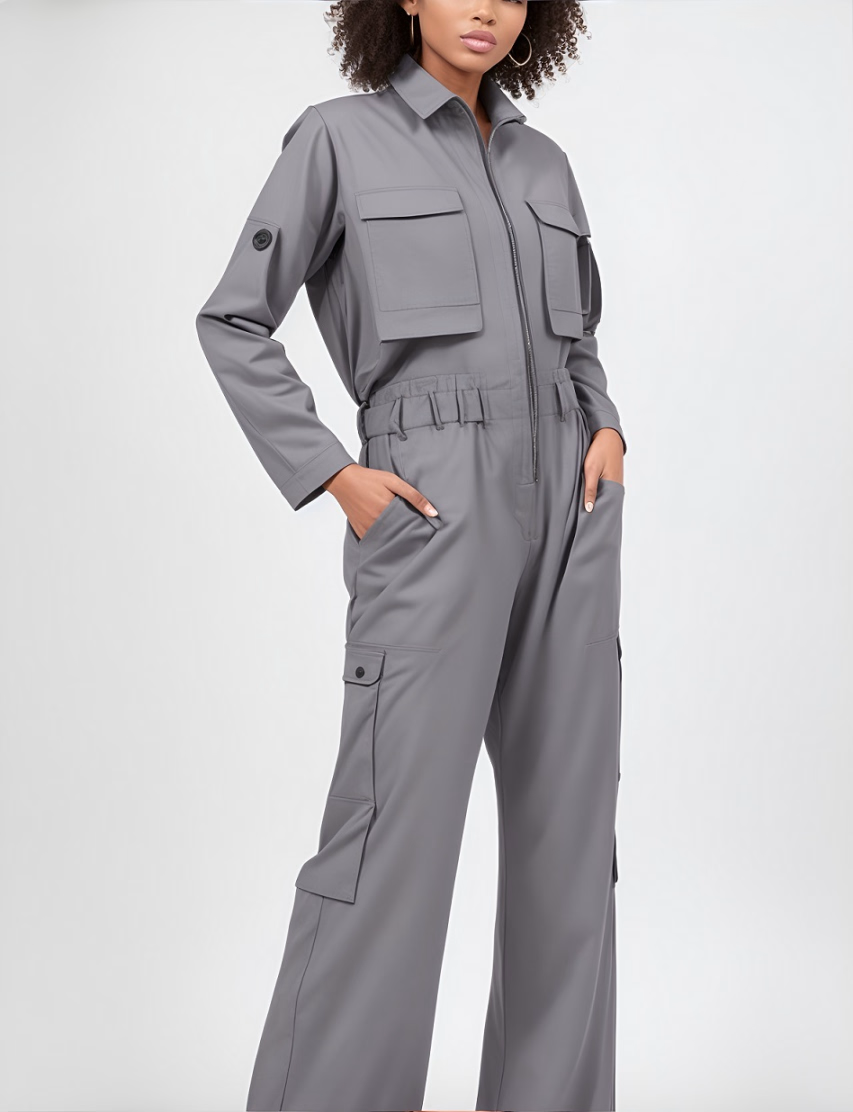
Even the use of contrasting thread color for stitching can create emphasis on the seams or design lines, making them more prominent.
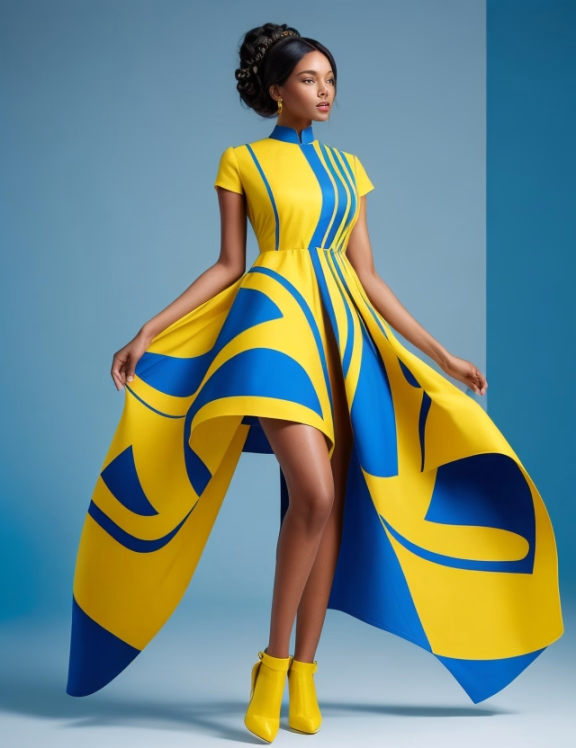
Pairing a bold accessory, such as a statement belt, necklace, or headpiece, with a simple garment can draw attention to both the accessory and the area it adorns.
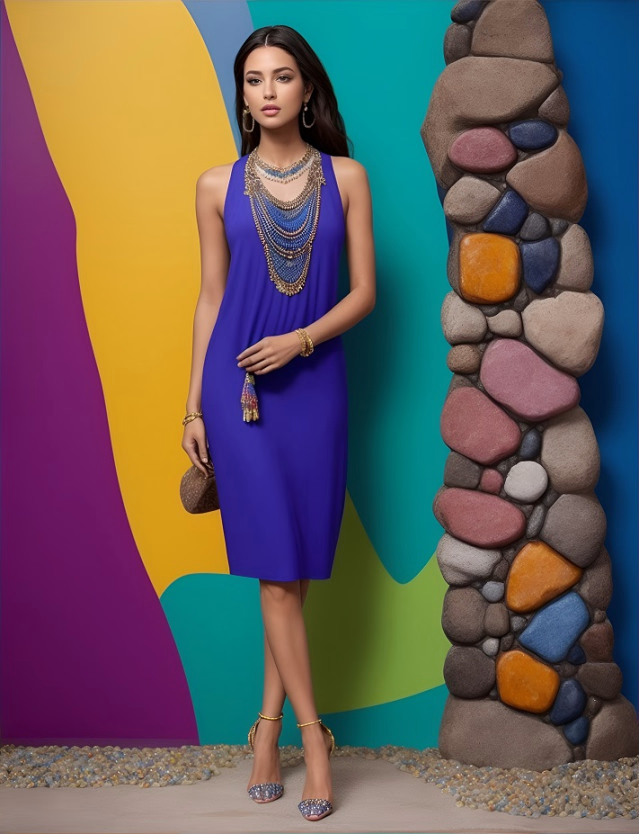
Successful use of detailing requires keen attention to detail and a strong understanding of the principles of design. One should be careful while selecting colour, embroidery designs, and using materials.
Emphasis in Fashion Design by Proportion
Proportion can also be used to create emphasis in fashion design. By exaggerating or accentuating a specific area or feature of a garment, designers can draw attention to that area.
Manipulating Proportion to Create Emphasis in Garments
Creating asymmetric or off-center silhouettes can draw attention to one side of the body, emphasizing the unique shape and adding an element of intrigue.
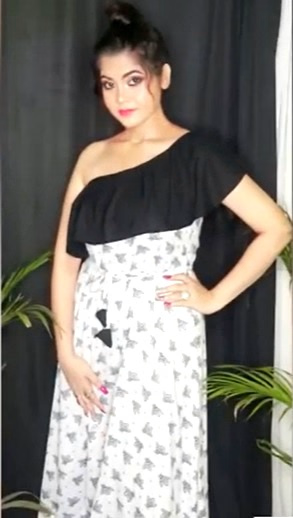
Incorporating oversized components, like exaggerated sleeves or a voluminous skirt, can create emphasis on the parts of the body covered by these bold elements.
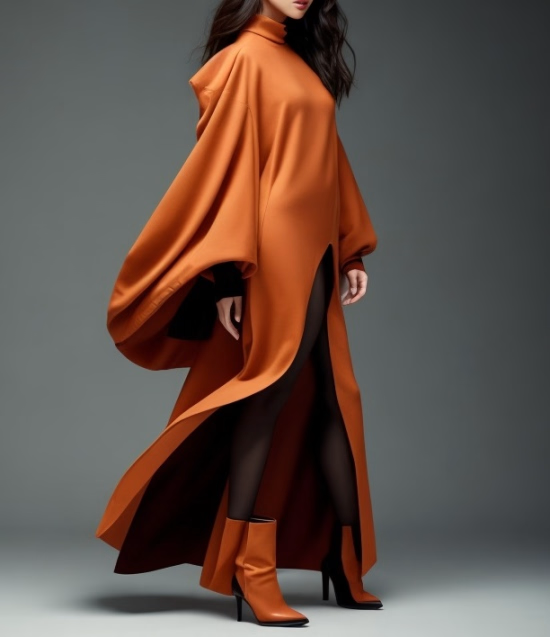
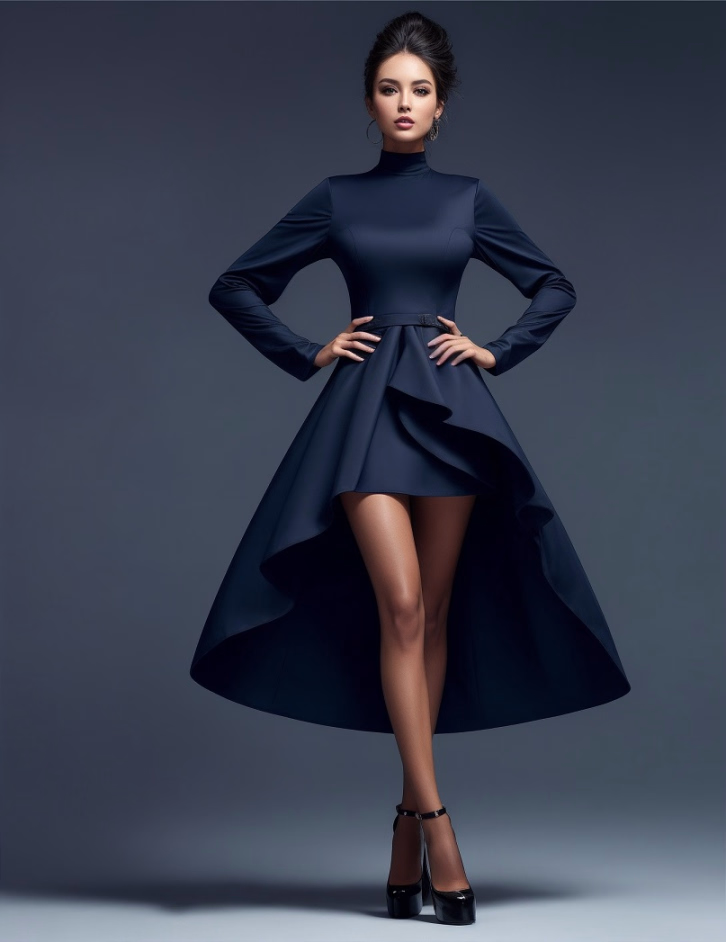
Elaborate or distinctive necklines, such as a plunging V-neck or an intricate collar, can emphasize the neck and upper chest.
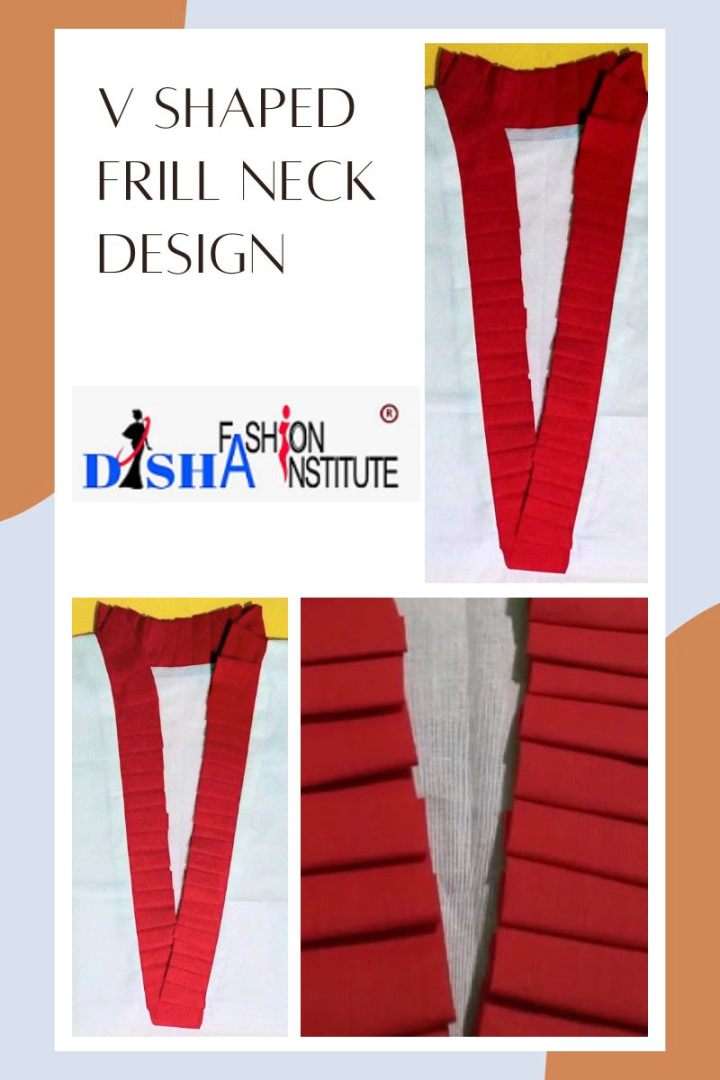
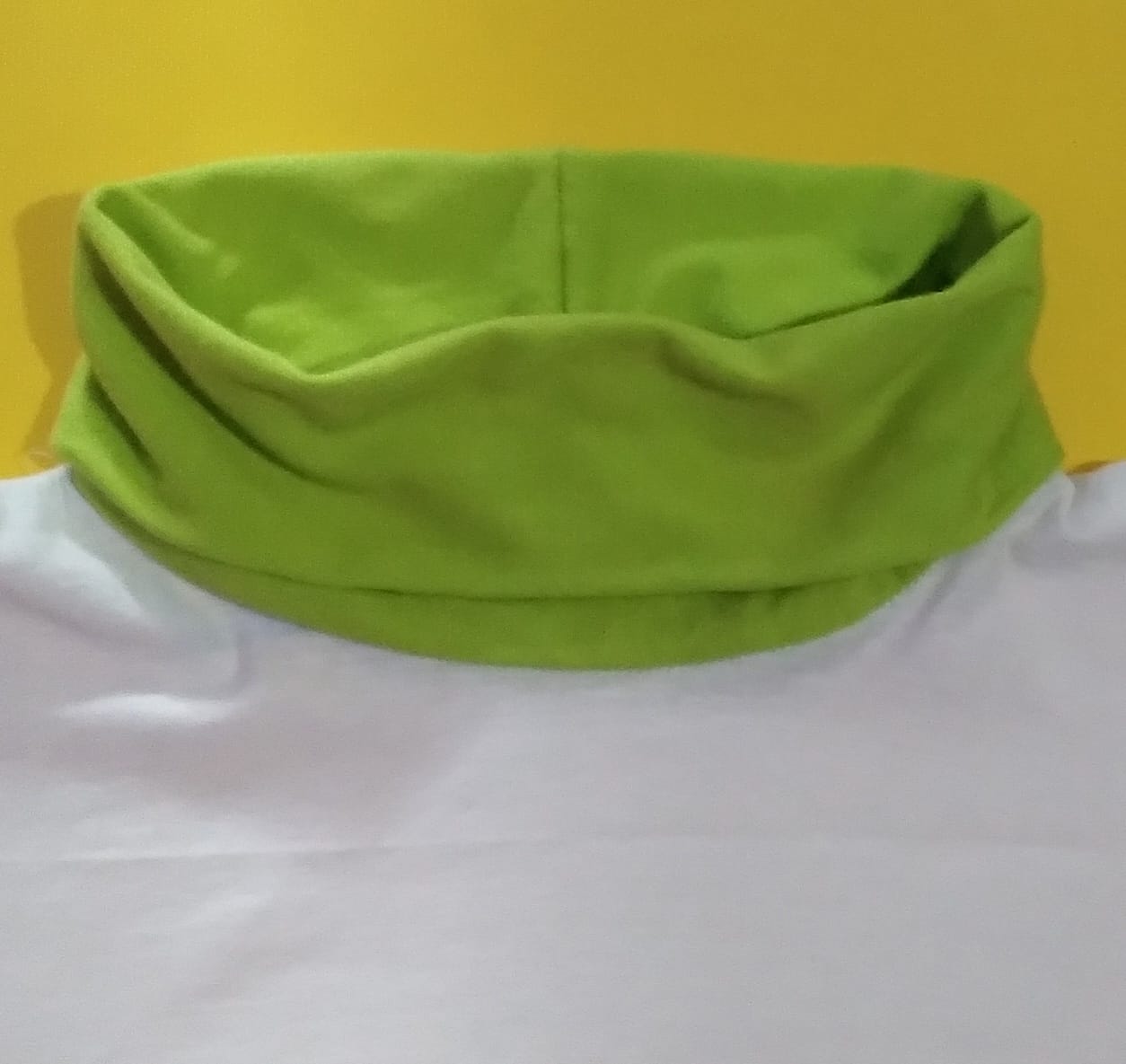
Raising the waistline of a garment, like in a high-waisted skirt or trousers, can elongate the legs and emphasize the waist.
Using prints in proportion to the garment size can create emphasis on the areas covered by the pattern.
The length of accessories, such as a statement necklace or long earrings, can direct the gaze and emphasize the neckline or face.
When manipulating proportion for emphasis, it's important to consider the wearer's body type and proportions to achieve a flattering and balanced effect. Proportion manipulation should enhance the overall design without overwhelming or distracting from the garment's intended focal points.
Emphasis in Fashion Design Using Colour
Colour is a critical element to create emphasis in fashion design. To use color perfectly a designer must have a proper idea of color theory, colours symbolism, and sense of color schemes. The use of color can convey mood, taste, create visual interest, and help to communicate the designer’s aesthetic vision. Color can be used in many ways in fashion design, such as to create contrast, harmony, highlight, create a focal point, or enhance different skin tones.
For example, bright or bold colors can draw attention to a specific area of a garment, while muted colors can create a more subdued look. Neon colors can be used to create a sporty look, dark colors can be used to create a formal look. For romantic dates, pink, and red colors can be used to make a garment or a green color garment for a garden party.
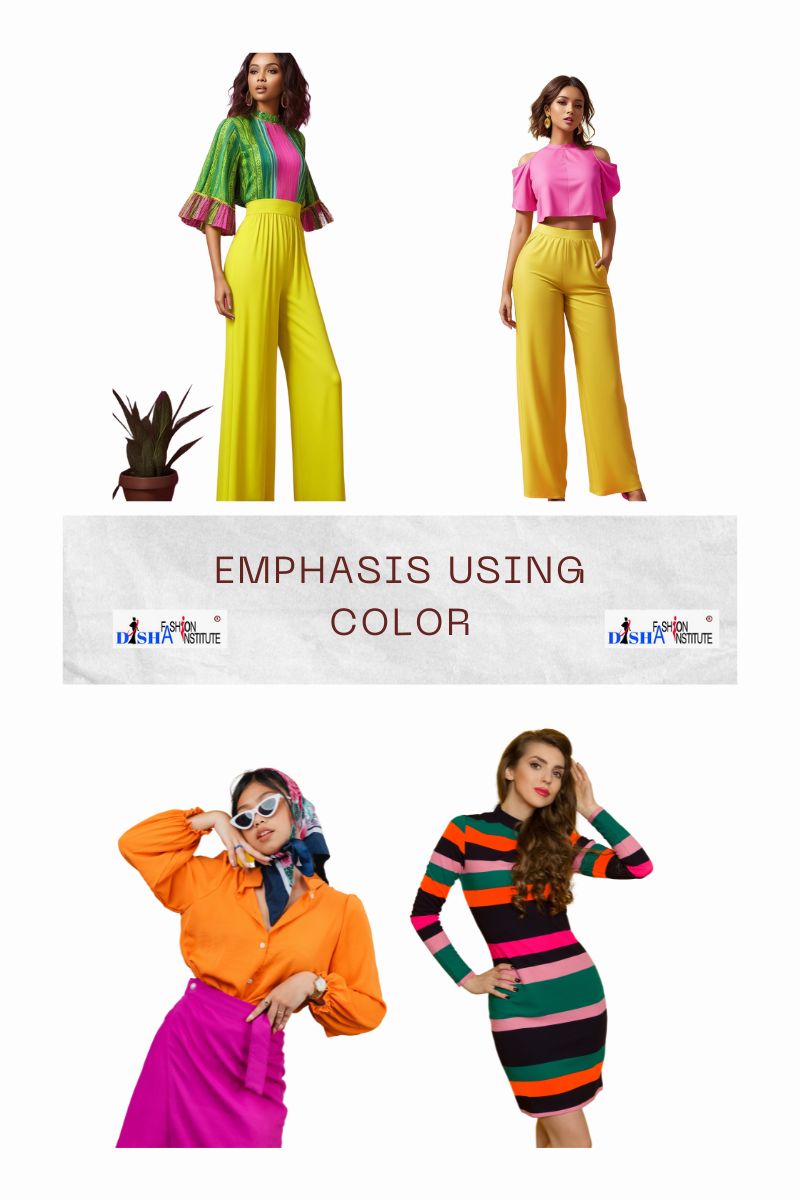
Explore our comprehensive blog post on color theory. Click the link below to delve into the fascinating world of colors and their impact on design.
Color Theory In Fashion Design
Emphasis in Fashion Design by Placement
The placement of design elements can also create emphasis in fashion design. By placing a specific design element, such as a pattern or print, in a strategic location, designers can guide the viewer's eye and highlight the focal points of their designs. For example, a designer may use a contrasting colour or texture at the neckline of a dress to draw attention to the face, or they might use a bold print or pattern at the waistline to create a more defined silhouette.
Types of Placement of Design Elements to Create Emphasis
Here are some ways by which the placement of design elements can enhance the principle of 'emphasis' in fashion design:
Centered Emphasis
Placing a bold or eye-catching design element in the center of a garment draws immediate attention and creates a strong focal point.
Vertical Emphasis
Emphasizing vertical design elements, such as a central zipper or buttons, can elongate the body and highlight the length of the garment.
Asymmetrical Emphasis
Introducing asymmetrical elements, like an off-center embellishment or a slanted neckline, creates visual interest and draws attention to the unique design.
Emphasis on Selected Parts of Garments
Here are some tips on how to emphasize selected parts of your body or garment
A distinctive or elaborate neckline draws attention to the face and neck area, becoming a focal point of the outfit.
Placing design elements like a belt, bow, or unique fastening at the waist highlights this area, accentuating the wearer's figure.
Design elements at the hemline, such as fringe, lace, or a contrasting border, can draw attention to the length and flow of the garment. Elaborate sleeve designs, such as bell sleeves or ruffled cuffs, create emphasis on the arms and hands.
Placing bold or intricate patterns strategically on specific areas of the garment can draw attention to those regions.
Strategically positioned cutouts can create emphasis on exposed skin or specific body parts, adding allure to the design.
Adding appliqué or patchwork to specific areas, such as the shoulders or bodice, can create emphasis on those details.
Conclusion
So, emphasis is an important principle of fashion design that helps designers create a visually interesting and aesthetically pleasing design. In the dynamic world of fashion clothing and apparel, emphasis plays as the virtuoso's brushstroke, breathing life into garments and transforming them into wearable art forms. Through the strategic use of color, proportion, detailing, and placement, designers can craft visual focal points that captivate the eye and evoke emotions. As designers continue to explore creative possibilities, the emphasis remains the timeless key to unlocking the allure of fashion's boundless potential.
All Topics on Principles of Design in Fashion
To explore all topics on principles of design in fashion, browse the list of blog posts below and click on the relevant heading to access the articles.
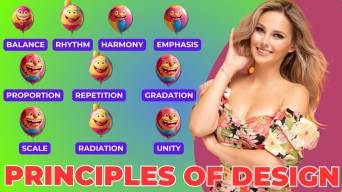
Principles of Design in Fashion
11 Principles of Design in Fashion You Need to Know to Become a Fashion Designer
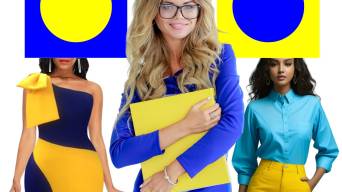
How to Contrast Colors for Clothing
How to Contrast Colors for Clothing | 8 Ways to Create Colour Contrast in Fashion
All Topics on Elements of Design in Fashion
To delve into all the subjects about elements of design in fashion, simply navigate through the list of blog posts below. Click on the headings to access the articles you're interested in reading.
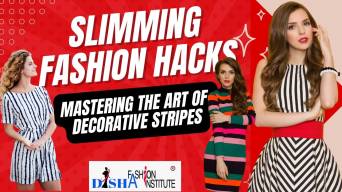
Elements of Design Line in Fashion
Elements of Design | Lines in Fashion | Creating Optical Illusions With Lines
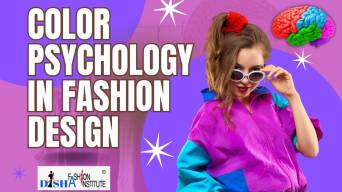
Color Psychology in Fashion Design
Impact of Color Psychology on Fashion Design: Exploring 12 Transformative Role of Color
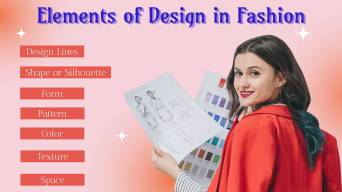
Elements of Design in Fashion
7 Elements of Design in Fashion You Must Understand as a Fashion Designer
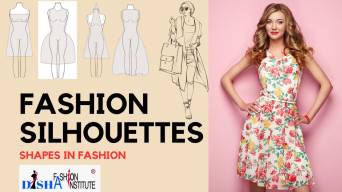
Types of Silhouettes in Fashion
Types of Silhouettes in Fashion | 12 Different Types of Fashion Silhouettes Explained
Explore Free Courses
Begin your fashion journey with our free fashion design foundation course. Dive into the world of style and creation today!
Fashion Designing Foundation Course
Join Fashion Designing Course
Enrol in our certificate courses for fashion designing and textile designing



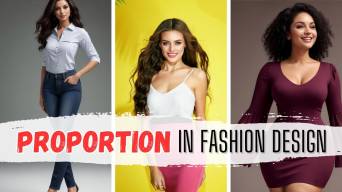


Comments